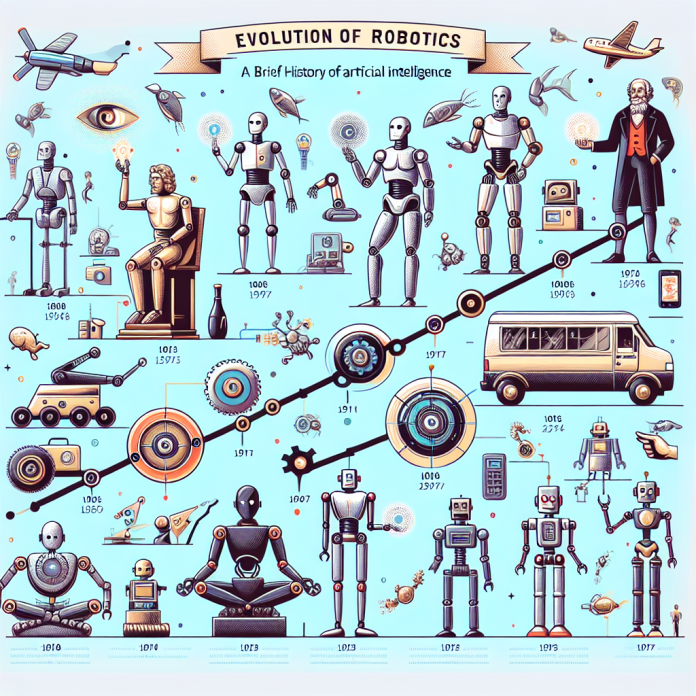Robotics and artificial intelligence have come a long way since their inception. The evolution of robotics can be traced back to ancient civilizations, where mechanical devices were built to perform simple tasks. However, it wasn’t until the 20th century that robotics truly began to take off.
Early Beginnings
One of the earliest examples of a robot-like device is the Antikythera mechanism, a gear-powered mechanical computer dating back to ancient Greece. This device was used to predict astronomical positions and eclipses, showing an early interest in automation and technology.
Fast forward to the 20th century, and we see the first true robots being developed. In 1954, George Devol and Joseph Engelberger created the first industrial robot, Unimate, which was used to perform repetitive tasks on an assembly line. This marked the beginning of the automation revolution in manufacturing.
The Rise of Artificial Intelligence
As technology advanced, so did the capabilities of robots. Artificial intelligence (AI) became a key component in making robots more intelligent and autonomous. In the 1950s, scientists like Alan Turing and John McCarthy laid the groundwork for AI, exploring concepts like machine learning and neural networks.
By the 21st century, AI had become more sophisticated, with robots being able to perform complex tasks like facial recognition, natural language processing, and even autonomous driving. Companies like Google, IBM, and Tesla have made significant strides in AI research and development.
Current Trends and Future Outlook
Today, robotics and AI are used in a wide range of industries, from healthcare and agriculture to transportation and entertainment. The rise of collaborative robots, known as cobots, has made it easier for humans and robots to work together in a shared workspace.
Looking ahead, the future of robotics and AI is bright. Advances in machine learning, computer vision, and natural language processing continue to push the boundaries of what robots can achieve. From self-driving cars to robotic surgery, the possibilities are endless.
In conclusion, the evolution of robotics and artificial intelligence has been a fascinating journey, from the early mechanical devices of ancient civilizations to the intelligent robots of today. As technology continues to advance, we can only imagine what the future holds for robotics and AI.

